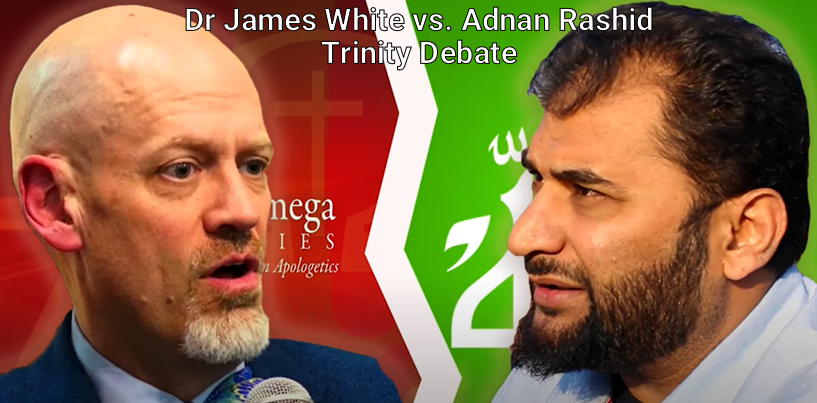[Repeat of series introduction that began on 17 December 2023: Where would you go today in the Old Testament to argue that Jesus is the Christ? There’s so much to this that cannot be dismissed. We’re given in many ways what the Messiah would be like, what his character would be, how he’d be received (even by different people), what he’d do, how he’d redeem, that we’d have his lineage, what he’d say, how it would all end, how he’d come and more. So much, and we see it all done in just one man! How would you know that he is the promised Messiah? Jesus’ birth, life, suffering, and glorification all demonstrate the facets of his excellent work. Jesus himself asked two of his disciples the same question I could ask you today, and then went to the same source to explain it that I’d like to go to as well in this series: “Was it not necessary for the Christ to suffer these things and to enter into His glory?” Then beginning with Moses and with all the prophets, He explained to them the things concerning Himself in all the Scriptures.” Luke 24:26-27. Jesus had to suffer to then enter into his glory he said. With this premise, he goes through some measure of the 39 books of the Old Testament revealing himself to them thereby. This is the same Old Testament we have today. I wish we were given the transcript of that talk, but God didn’t wish to give it. But can we see it? Many historical events in the Scriptures could be fulfilled by men and women, but no one but Jesus (Messiah) could fulfill them all. The Lord himself demonstrated that he was and is the Christ, and our New Testament reflects that its writers were well aware of this. The clear approach of the Apostles was to argue the same from the Bible that Jesus read- the 39 books we now call the Old Testament. To know what it means that Jesus is the Christ is to show the fulness of God’s revelation to mankind in the New Testament in him. In the Old Testament, God said he’d defeat sin and death; the New Testament shows us that work done. There are so many ways to talk of this. So many passages. I won’t exhaust them, but in this series, I wish to examine some of these passages. These passages are how I would prove Jesus is the Christ from the Old Testament].
I want to consider next what’s one of the clearest passages of Jesus in the Old Testament. Isaiah 53 is often entitled, “The Suffering Servant.” An examination of its whole 12 verses is beyond the length of a single devotional, but I will seek to point to a few things over a few entries. John Calvin does well in his commentary to remind his readers that the chapter division here should have come back in Isaiah 52:13. We’ll come back to that. It is crystal clear from the Gospel of John’s 12th chapter that John saw Isaiah 53 as pointing to Jesus. In John 12:38-41, John melds Isaiah 53:1 and Isaiah 6:10 together into a clear lesson about God’s judgment on Israel in Jesus’ ministry in Jerusalem. John teaches us that the one Isaiah saw in the year Uzziah died next to that river was Jesus, the King of Israel. How do we argue the same from an examination of the Old Testament text?
There should be no doubt that God gave these passages to speak of Jesus’ coming. Isaiah 53:1-2 reads:
“Who has believed our message? And to whom has the arm of the Lord been revealed? For He grew up before Him like a tender shoot, and like a root out of parched ground; He has no stately form or majesty that we should look upon Him, nor appearance that we should be attracted to Him.”
The expression “the arm of the Lord” is used frequently in the Old Testament to talk of the works of God. Consider two passages as evidence. Deuteronomy 5:15a: “You shall remember that you were a slave in the land of Egypt, and the Lord your God brought you out of there by a mighty hand and by an outstretched arm…” Isaiah 52:10: “The Lord has bared His holy arm in the sight of all the nations, that all the ends of the earth may see the salvation of our God.” In 53:2, the antecedent of “he” is this “arm of the Lord” in vs. 1. It’s not so much a title as it is a revealed reality, but given that there is so much imagery of Jesus being with, next to, seated next to, or at the right hand of the Father in the New Testament, a title “the arm of the Lord” is not inappropriate. Jesus is the revelation of the saving power of God’s love and truth. It’s a metaphor, but a clear one in him. This arm of the Lord in 53:1 revealed himself by “[growing] up before him.” This is curious. Jesus did this. He grew up before “Him,” before Yahweh. Luke 2:51-52 reads: “He went down with them and came to Nazareth, and He continued in subjection to them; and His mother treasured all these things in her heart. And Jesus kept increasing in wisdom and stature, and in favor with God and men.” The verse goes on in Isaiah. Jesus was tender, full of grace to the world. A teacher at twelve years of human age as we see in Luke 2 just before what was cited in Luke 2:41-49. We continue. A “root out of parched ground” was he. He was rooted but was himself Israel’s root. He was the sustainer of the root itself. It may be parched and dying but his root remains strong as he does not draw his sustenance from it; it draws its sustenance from him. See John 15 for more parallel teaching on this from Jesus in his own ministry. The next part in vs. 2 says, “He has no stately form or majesty that we should look upon Him, nor appearance that we should be attracted to Him.” Jesus was from a nowhere town. So notorious was its humble stature that when Nathanael was told where he was from he literally asked, “Can any good thing come out of Nazareth?” John 1:46. Jesus himself said of his own life, “The foxes have holes and the birds of the air have nests, but the Son of Man has nowhere to lay His head.” Matthew 8:20. His birth was so lowly that it was observed by shepherds and angels, yes, but also by slobbering and flatulent animals who unwillingly shared their trough with him for his first night of human sleep among us. Luke 2:7. There was nothing Solomonic in Jesus’ life. Only three men (five if you count Moses and Elijah) saw his power before his Resurrection on the Mount of Transfiguration. When some of his first followers asked, “Where do you live, Rabbi?” in John 1:38 they were not taken to a castle. Jesus’ attractiveness comes in later, but his first coming was not like what Scripture says his next one will be. It was lowly. God arranged that there be no rooms at any inns in Bethlehem for him as the bread from heaven came down to earth. Humility is a quality we do not value all that much, isn’t it?
Now, some have argued that Israel as a nation are what these passages are speaking about. But clearly, given the aggregate of the data throughout, this is not fitting. Parts may fit, but not the whole. Not even close. It’s in the whole scope of the life of Jesus that we see such as these hundreds of data points converging in the most overt and yet most subtle details. The man simply fits the whole picture. I could then argue each point as points each fitly pointing to the life of Jesus as the Christ. These passages could be New Testament passages, but they came roughly seven hundred years before Jesus’ incarnation. I could reason each point in a synagogue with Paul at my side that Jesus is that “arm of the Lord” that has been revealed in the details of his life. And as we’ll see as we move through our passages together, his death and Resurrection as well. Hundreds of points add up to just one clear sum- a human who is both God and man. My mind is helped by this picture I’ve attached below. There are two shapes here. One simple, one complex. Consider these crude attempts at a bit of abstract looking art as illustration of the many points of prophecy like Isaiah 52-53 that prefigure Jesus in the Old Testament. God needn’t give us five hundred utterances, he needs to only give one. Though we have hundreds. Consider these two shapes below as two shadows cast upon the ground by something. This is what prophecy does for Jesus in the Old Testament. The shadow on the left is simple. Many things could fit it. Many people, places, and things did fit parts of prophecies in the Old Testament in what we call near and far fulfillments, but the shadow Jesus casts of himself throughout the Old Testament is more like the shadow on the right. It is very complex. When Jesus turns the light upon himself- as he did in his incarnation- we see the intricacy of all the details he alone fills all in all perfectly. Perhaps this picture will help you.

This is a picture of how prophecy works. It casts a shadow made clear when the light that fits it arrives. The Old Testament is how God promised he’d defeat death; the New Testament shows us how he did it. Unbelievers will claim things like, “Jesus never claimed to be God” or that he was just an angel or a holy man, but God has given us such an elaborate narrative that it’s not a phrase or two one can twist to dismiss that he is God, one must dismiss his testimony altogether to do so. It’s not just a phrase you can deny, though Jesus clearly claimed to be God in several, you must forget that he fits this shadow so perfectly that it’s an all or nothing in him. It is genius! It is resounding to his praise! It calls every rock, bird, war, and star to direct their witness toward him in unison. One could as easily dismiss the sun at noon on a summer day as to dismiss that Jesus Christ is Yahweh, the Son of Man, the second Person of the Trinity. More to follow.
God bless!!!
(If this has been a blessing to you, would you please share it with someone else? Come by Biblecia.com anytime for new stuff).







